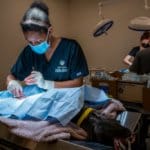
The American Dream – where anyone can make it in life through hard work alone – is an enduring concept many still believe all over the world. Upward social mobility, ie. doing better economically than your parents, is sold as possible regardless of the class and circumstances you’re is born with. Counting on this, foreigners invest a lot of time and money getting to the US to study and work, hoping to reach this golden future the country promises.
Many reports have since debunked the concept as a myth or claim it’s no longer relevant in today’s world. Another new report by the Georgetown University Center on Education and the Workforce (CEW) adds more damning evidence to the current inequality of opportunity in America.
The gist of the report is this: the most talented disadvantaged youth don’t do as well as the least-talented advantaged youth. One report, titled Born to Win, Schooled to Lose: Why Equally Talented Students Don’t Get Equal Chances to Be All They Can Be, found that:
“A child from a family in the highest quartile of socioeconomic status (SES) who has low test scores in
kindergarten has a 71 percent chance of being above-median SES at age 25. However, a child from a low-SES family with high test scores has only a 31 percent chance of reaching above-median SES by 25.”
The injustice is worse by race. Black and Latino 10th graders with top half scores are still less likely to earn a college degree than their White and Asian peers with similar scores.
Anthony P Carnevale, Director of CEW and lead author of the report, said: “To succeed in America, it’s better to be born rich than smart.”
But having the smarts does help. The report found that for those who maintain high math scores in secondary school, those from the lowest quartile of SES are “twice as likely” to reach the top half of SES as young adults.
But brains alone aren’t enough to put these students on par with their more affluent peers. The report found that, regardless of their academic success, “kindergartners from low-SES families who earn college degrees have a 76 percent chance of reaching high SES by age 25 compared to a 91 percent chance among their low-scoring, high-SES peers who earn college degrees”.
The authors recommend interventions to fix this disparity. They suggest more early childhood education, continued interventions throughout K-12, improving high school counseling on how to transition from high school to postsecondary education and training, as well as access to high-quality work experience at high school and college levels.
“The fact that children’s test scores go up and down over time shows that there is room for intervention,” said Megan L Fasules, assistant research professor and co-author of the report.
“With smart policy changes, education can mitigate the effects of inequality,” said Fasules.
Liked this? Then you’ll love…
The elite schools India’s rich and famous send their kids to
The appeal of UK private schools among the world’s rich – report







